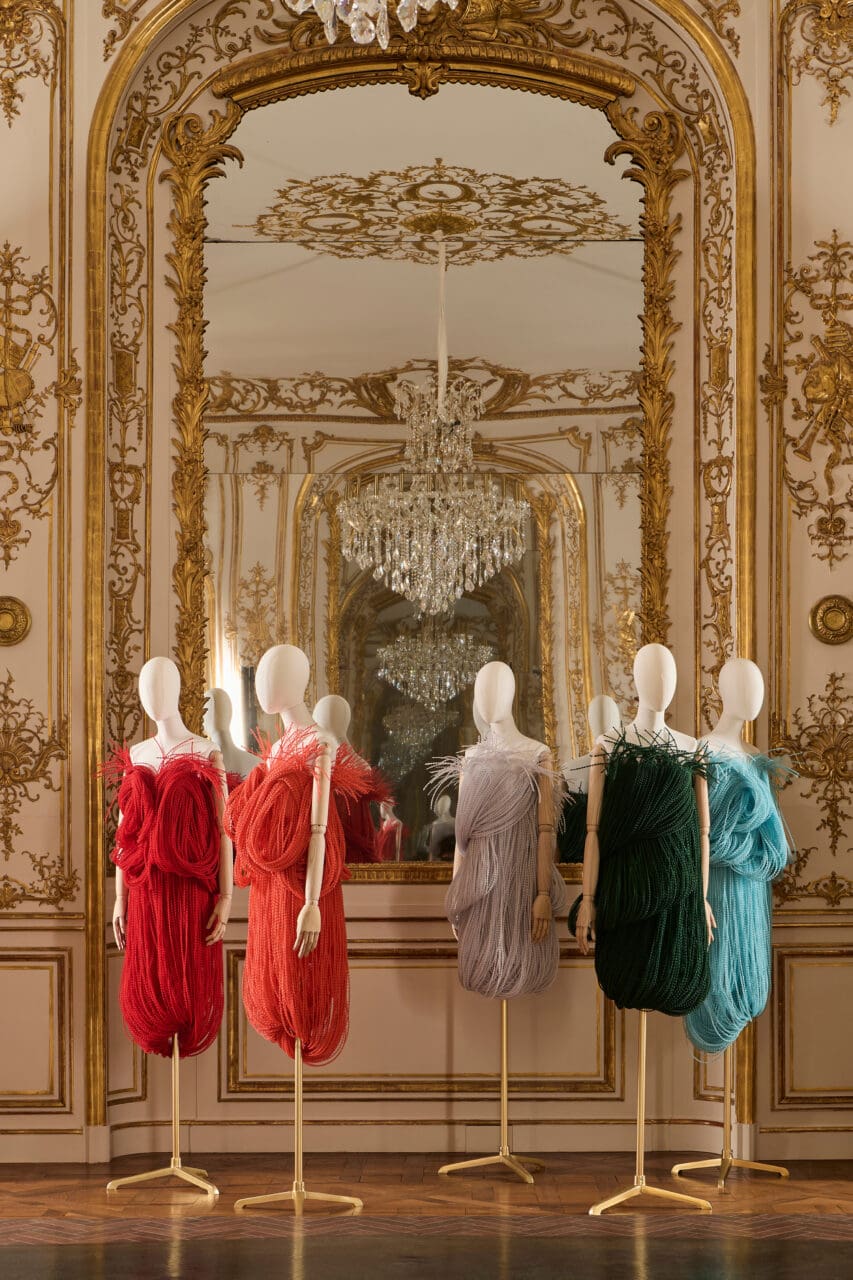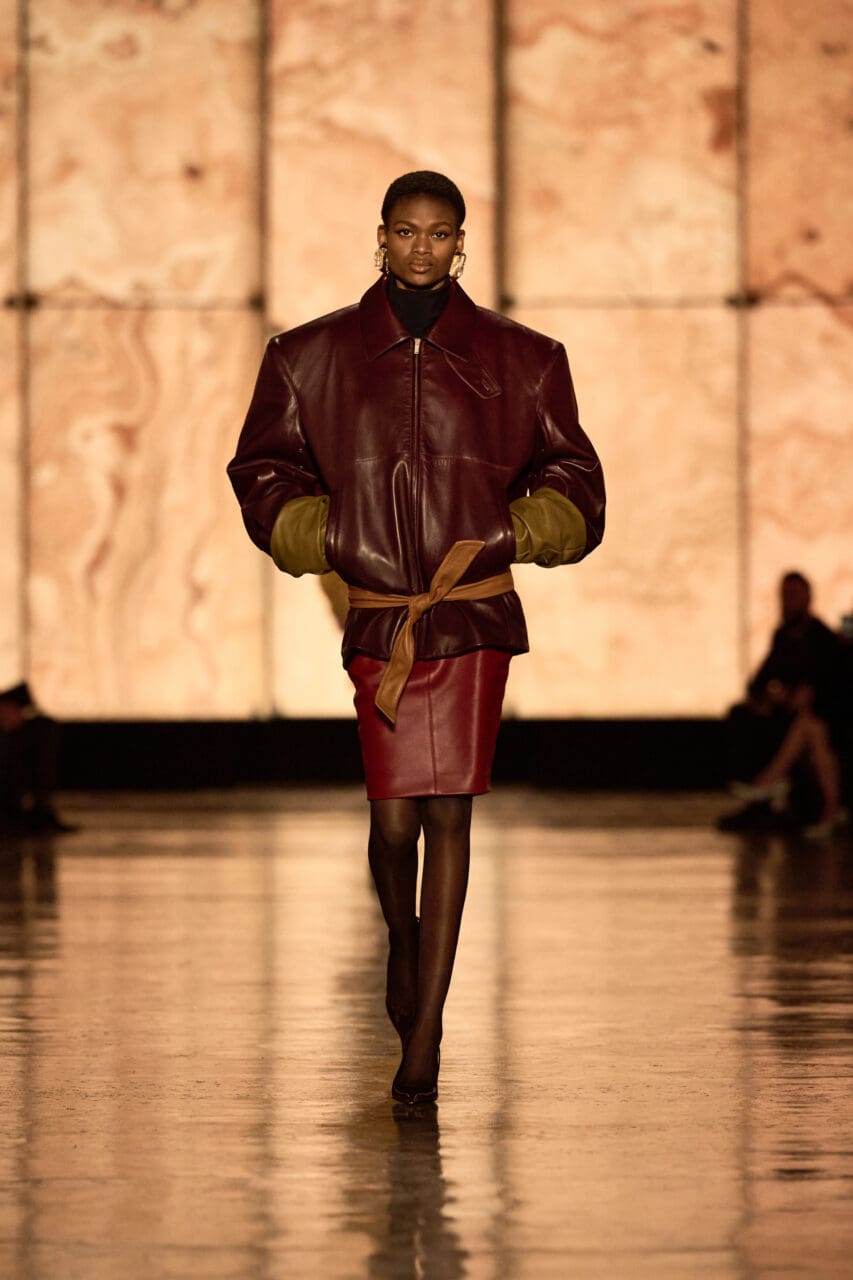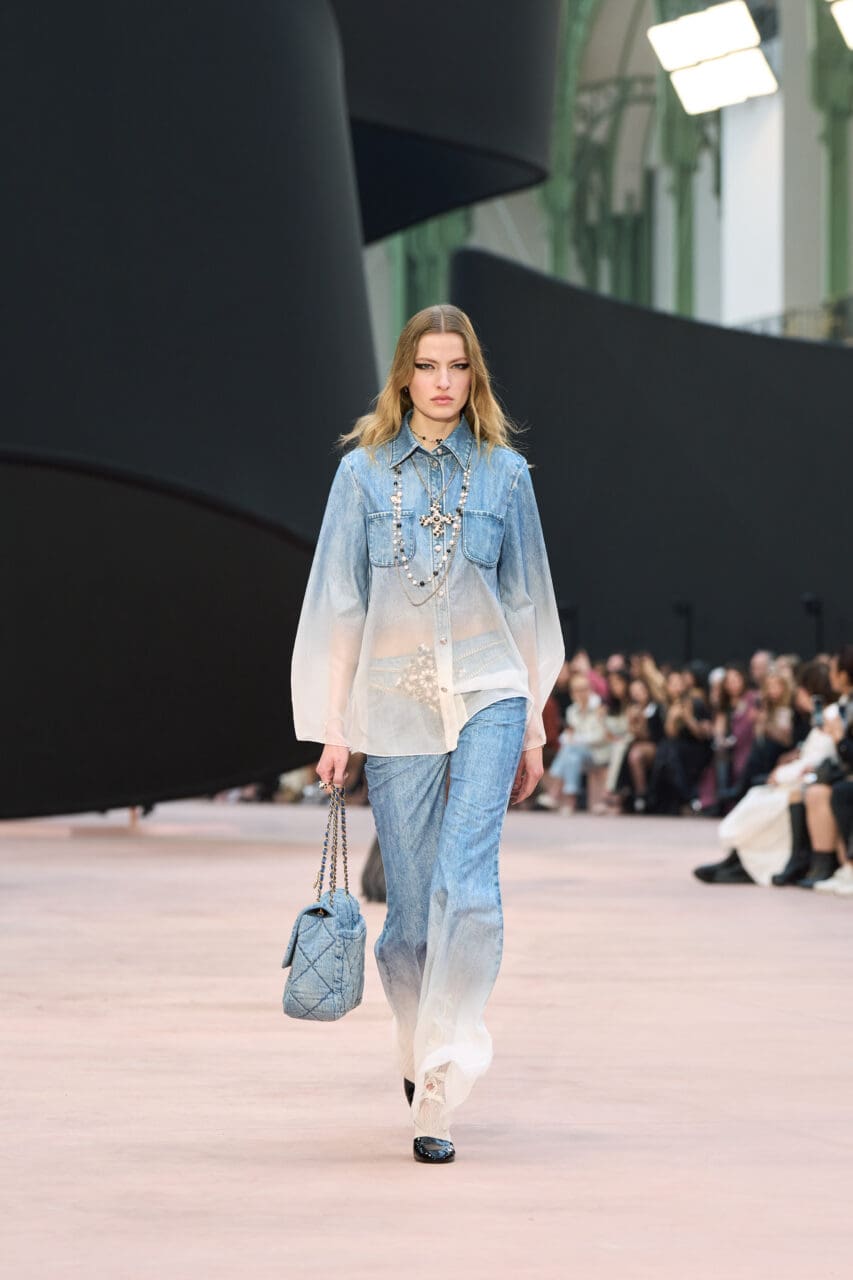Louis Vuitton has staged a decade’s worth of Nicolas Ghesquière’s destination shows in architectural marvels the world over. This year, the designer chose the Hypostyle Room of Antoni Gaudi’s Park Güell, a roofed hall whose mosaic ceilings are a Gaudi signature. The Park Güell was conceived as planned community, but was canceled mid-construction by World War I and was christened a park instead, and has since become one of Barcelona’s main tourist attractions alongside the architect’s masterpiece the Sagrada Familia.
Park Güell’s phantasmagorical vibes are in keeping with the era-mashing, time-traveling codes that Ghesquière has established at Vuitton in his 10 years at the brand, but the location was a bit of a red herring. His new cruise collection was indebted to Gaudi only insofar as it was inspired by Spanish characters of all stripes. In a pre-show interview Ghesquière mentioned the great painters Velazquez, Goya, and Zurburan, the legendary filmmaker Luis Bunuel and the award-winning 2022 film by Rodrigo Sorogoyen As Bestas, as well as the upcoming America’s Cup in Barcelona, of which Vuitton is the main sponsor.
“I wanted to respect the place we are,” Ghesquière said. “I love that this country is evocating a certain groundedness and some rigor, and in the meantime it’s about freedom, it’s about youngness, it’s about an extravagance somehow.”
That push-pull played out in the collection, which began with a parade of tailored, mostly neutral looks, all worn with straw gaucho hats and mirrored racing shades. Ghesquière said that the first and third exits were modeled on the sailor’s traditional vareuse—note their wide collars—but their broad shoulders and upside-down triangle shapes borrowed equally from the 1980s silhouettes of his youth. “It’s quite dressed up, there’s nothing casual about it,” he said. By the end, though, the strictness of his jupe tailleurs and coat dresses was replaced by the voluptuous drape of silk skirts and trousers, their chiaroscuro folds of silk nodding in the direction of the Spanish masters he referred to. The ultramarine of a one-sleeved bubble dress was particularly gorgeous.
In between he proposed horsey touches like glossy riding boots and jodhpurs with deep faux fur cuffs, and riffed on polka dots and ruffles, though there was nothing so commonplace as a flamenco dress. No reference to Cristobal Balenciaga either. Though he was Spain’s greatest designer, and Ghesquière headed up the house for nearly a decade-and-a-half, he has closed that chapter. Instead, a deconstructed white lace skirt was reconstructed with wire hooks in the style, he said, of a fellow Spaniard designer Paco Rabanne. (Ghesquière’s friend Julien Dossena, who currently designs Rabanne, was in the audience alongside their mutual friend, designer Natacha Ramsay-Levi, and LV A-listers like Jennifer Connelly, Regina King, and Sophie Turner.)
Other experiments, like the silk and wool dresses he dunked in boiling water, shrinking just the wool, owed less to the setting than they did to Ghesquière’s own process-oriented approach and preference for worked surfaces. One thing that Ghesquière and Gaudi share for certain is a flair for the audacious.
Editor
Nicole PhelpsCredit
Lead image: Filippo Fior / Gorunway.com





